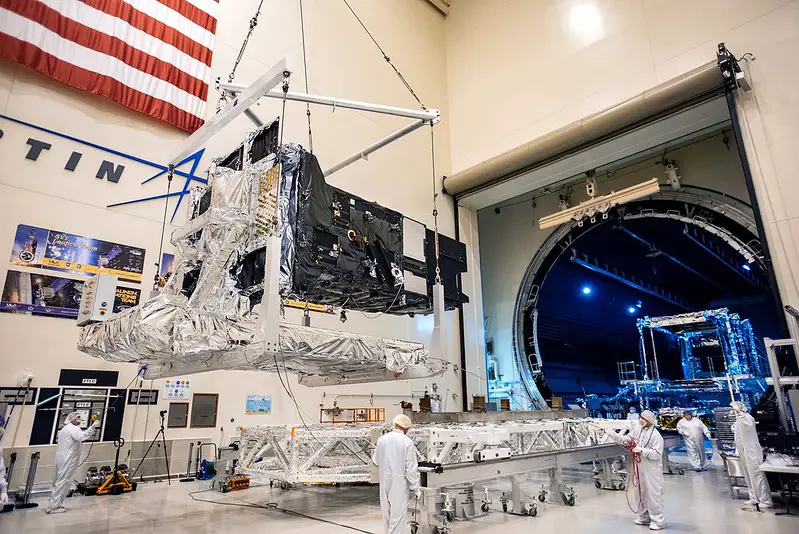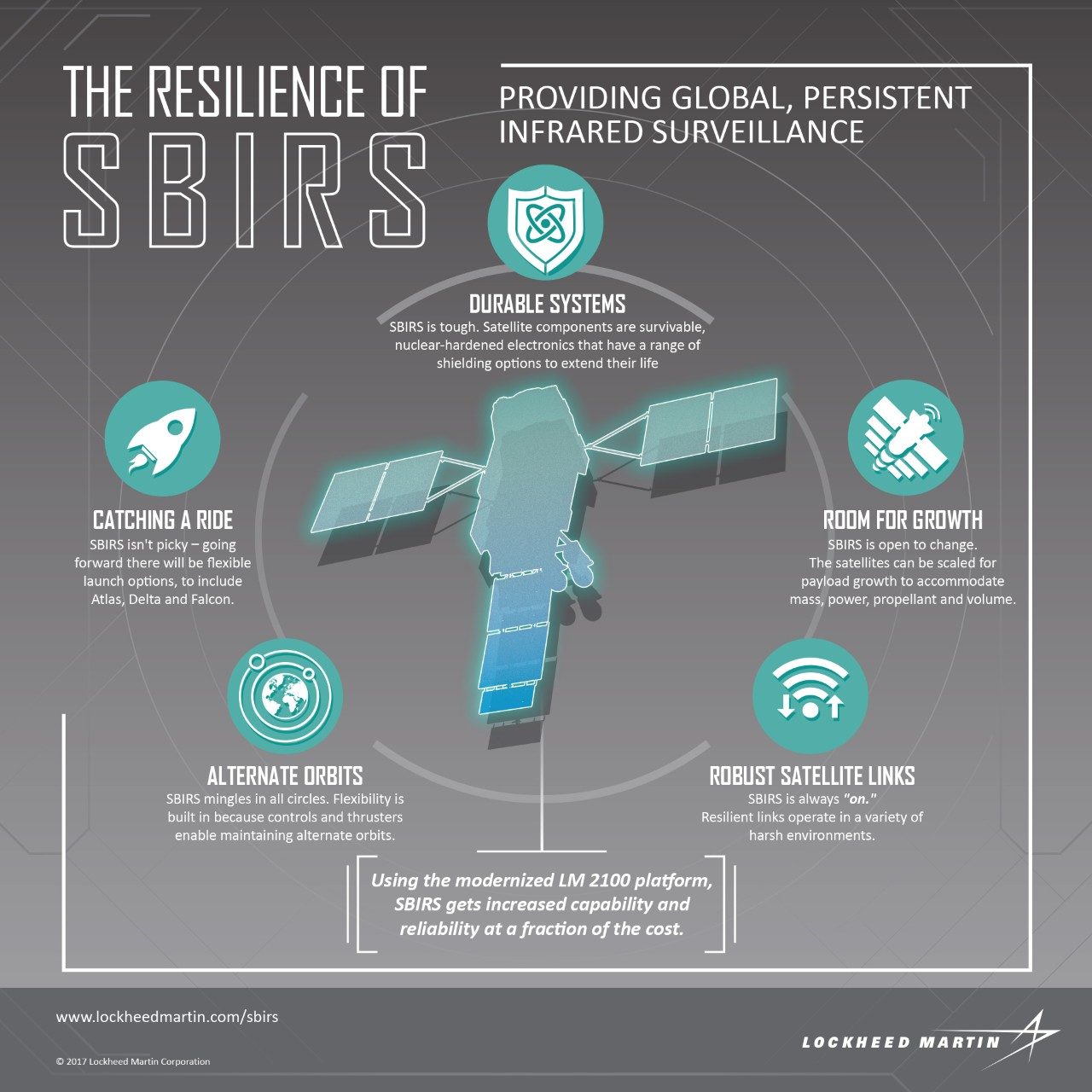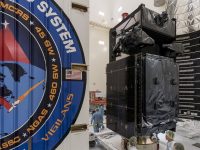Lockheed Martin Corp., Littleton, Colorado, has been awarded an $11,548,797 modification to contract for Space Based Infrared System Contractor Logistics Support (SBIRS) product support integration contract evolution (SPICE). The SBIRS contributes to the missile defense system, contributing early warning, defense, awareness and technical intelligence to both the defense and intelligence communities. Work is expected to be completed by Aug. 29, 2022. Funds in the amount of $3,000,000 are being obligated at the time of award, and the total cumulative face value of the contract is $1,021,548,797. Space and Missile Systems Center, Peterson AFB, Colorado, is the contracting activity.
The SBIRS provides early missile warning for the U.S. military through infrared surveillance. It evolved from the Defense Support Program to meet requirements of defense and intelligence communities as part of the missile defense system. It also provides battlespace awareness and technical intelligence for both communities. SBIRS has powerful overhead sensors that provide vast amounts of data. At the SBIRS Mission Control Station, Overhead Persistent Infrared Battlespace Awareness Center at Buckley Air Force Base, Colorado, this data is being used for operational applications across areas like battlespace awareness, intelligence and 24/7 tactical alerts. The U.S. Air Force’s newly created data utilization Lab is bringing together government, industry and academia.

Following a successful launch from Cape Canaveral Space Force Station in Florida, the U.S. Space Force’s Space Delta 4 operations team is now “talking” with the fifth Space Based Infrared System Geosynchronous Earth Orbit (SBIRS GEO-5) satellite. SBIRS GEO-5 is the latest satellite to join the Space Force’s orbiting Overhead Persistent Infrared (OPIR) missile warning constellation equipped with powerful scanning and staring surveillance sensors. SBIRS GEO-5 is the first military space satellite built on an LM 2100 Combat Bus™, a version of Lockheed Martin’s modernized, modular LM 2100™ space vehicle with greatly enhanced resiliency. SBIRS GEO-5 is a step toward achieving the resilient missile warning to be provided by SBIRS’ follow on, the Next Gen OPIR Block 0 System.
The SBIRS will eventually be replaced by the Pentagon’s Next Gen Overhead Persistent Infrared satellites, which will include large GEO satellites and cheaper, smaller satellite operating in low earth orbit, the Air Force’s Space and Missile System Center. The new OPIR system is under development by Lockheed Martin, as well as subcontractors Raytheon and Northrop Grumman-Ball Aerospace, and “the program remains on track to achieve a GEO space vehicle delivery by fiscal year 2025,” the Air Force said in June. Work under the new contract will be performed at Peterson Air Force Base, Buckley Air Force Base, Greeley Air National Guard Station, all of which are in Colorado, in addition to work done in Boulder, Colo. and outside the continental United States.

